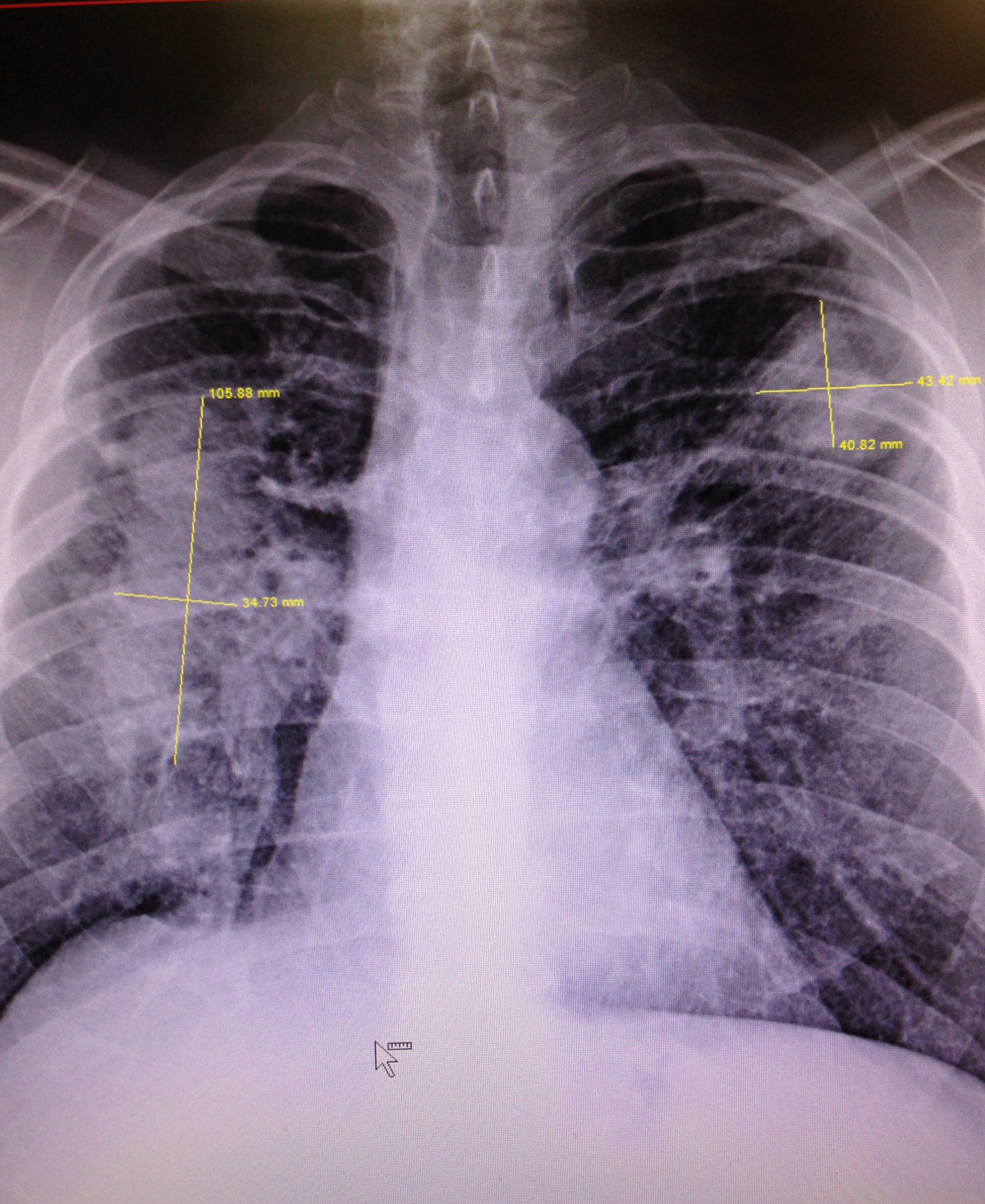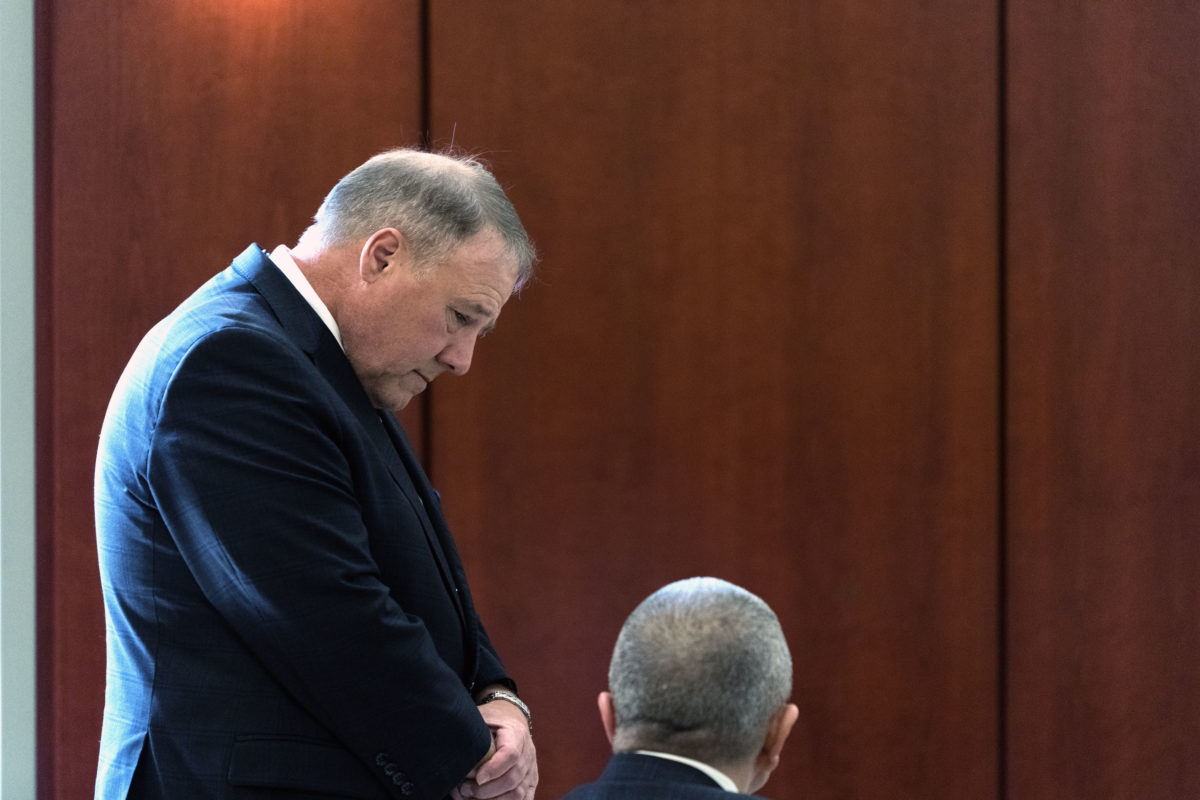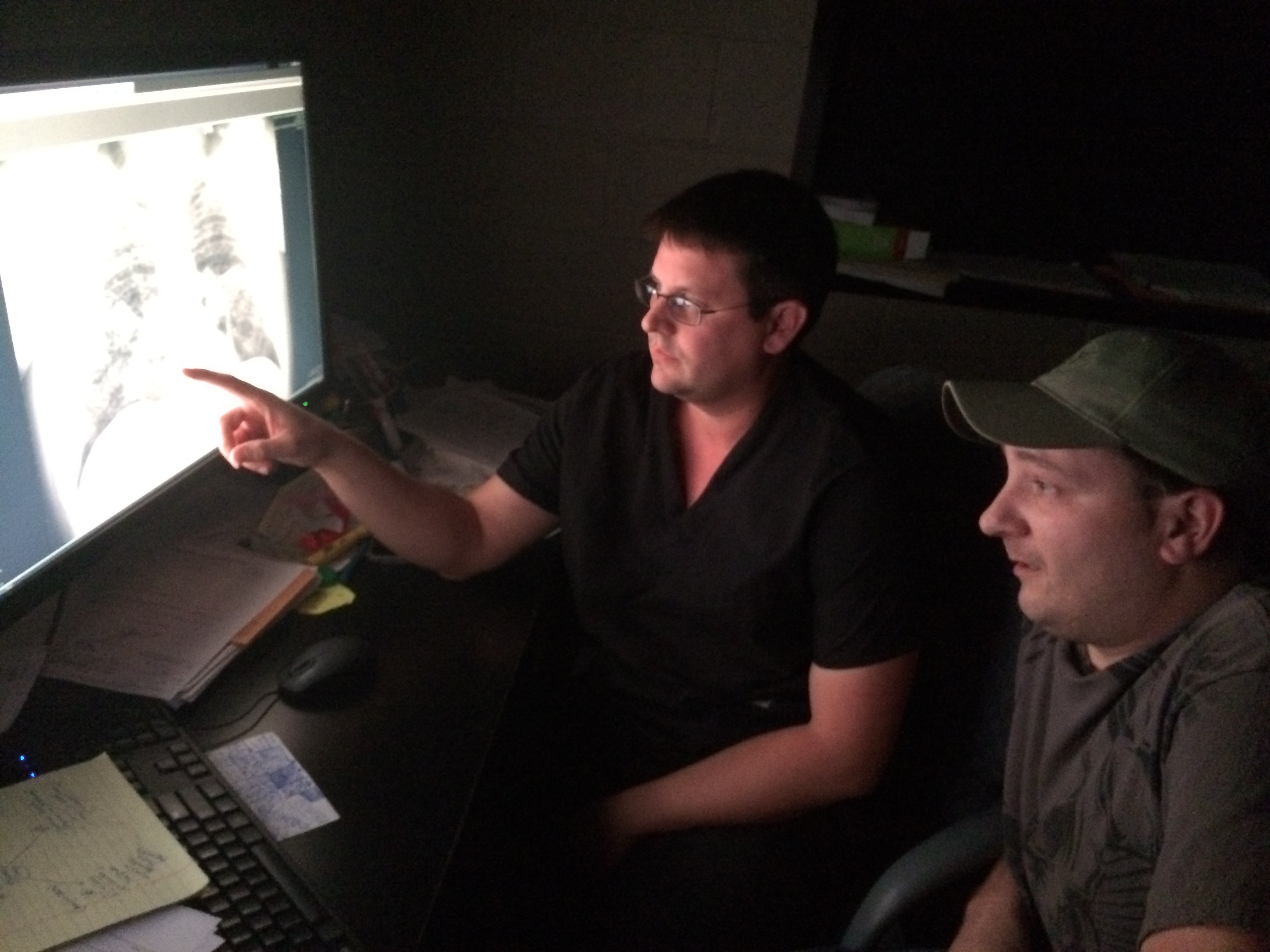Black Lung Clinics Call For Action But Top Regulator Plans No New Measures
In the wake of an NPR and PBS Frontline investigation into the surge in cases of black lung disease, a coalition of black lung clinics is calling for action to better protect coal miners from dust exposure.
NPR reports that more than 2,300 miners in central Appalachia are sick with the most serious form of the disease. The investigation also documents the inaction by industry and government regulators, despite decades of warnings that tighter controls on coal and rock dust exposure were needed.

An X-ray image of an Appalachian coal miner with black lung lesions.
The National Coalition of Black Lung and Respiratory Disease Clinics said in a statement Monday that the federal government has “more than enough data demonstrating the risks associated with current mining practices to implement new measures.”
Specifically, the Coalition asks regulators to enact a standard to control the dust generated when mining equipment cuts into rock containing silica, or quartz. Silica dust is highly toxic and, as the NPR investigation shows, health advisors urged tighter control standards on that dust decades ago.
But in a recent call with mining industry stakeholders, the government’s top mine safety and health regulator, David Zatezalo, said he would have “no announcements” on any new measures to control dust or to address lung disease among miners.
“What we are doing is enforcing the law,” Zatezalo said. Zatezalo is the Assistant Secretary of Labor for Mine Safety and Health and leads the Mine Safety and Health Administration, or MSHA.
Zatezalo, a former mining industry executive, appears to be at odds not only with the black lung clinics but with the findings of the National Academy of Sciences, which last year called for a “fundamental shift” in the way the industry controls dust exposure in order to prevent lung disease among miners.
MSHA Response
In a sometimes testy exchange with reporters, Zatezalo defended MSHA’s current approach to monitoring dust exposure in mines.
 Jesse Wright, WVPB
Jesse Wright, WVPBFormer mining executive David Zatezalo leads the U.S. Mine Safety and Health Administration.
“The system has changed and it has increased sampling a lot,” Zatezalo said, referring to changes made during the Obama administration which strengthened standards for dust exposure and introduced new monitoring technology called the continuous personal dust monitor, or CPDM.
“That CPDM has lowered miners’ exposures and we have proof of that,” Zatezalo said. “We sample over twice as much as we used to.”
He said the number of incidents where samples exceed the dust standard is now one-third or one-fifth of what it was before the new monitoring was put in place.
“Quartz exposure has dropped, look at past few years and you will see compliance records have changed dramatically,” Zatezalo said.
He said that due to the latency period between dust exposure and the onset of disease, the current cases of black lung are linked to exposures from when the earlier dust standard was in place.
However, the new devices do not specifically monitor for dust from quartz, or silica. And as the NPR investigation points out, MSHA’s own data show that earlier attempts to use an overall dust standard to control quartz dust exposure resulted in thousands of incidents where miners were exposed to excessive quartz dust.
Calls For Action
Those who work on the front lines of the current epidemic of black lung are concerned that Zatezalo’s agency is not doing enough to respond to the surge in disease.
“I am very fearful that this is not enough, that at these levels disease will continue,” black lung clinic coalition member Debbie Wills said.
Wills, who works at Valley Health in Cedar Grove, West Virginia, has nearly 30 years of experience serving miners’ health.
“We would like MSHA to have a silica standard and testing to see that the standard is really being met,” she said. “And we would like operators to take responsibility for their workforce.”
She and her black lung clinic colleagues are not alone in calling for action. A June report from the prestigious National Academy of Sciences said the coal mining industry needs a “fundamental shift” in the way it controls exposure to coal and rock dust.
The report called specifically for better monitoring of the highly toxic silica or quartz dust that is formed when cutting into some kinds of rock, such as quartz-bearing sandstone.
The central Appalachian mining region where Wills works is experiencing the bulk of the new black lung cases. In a study published last summer, researchers at the National Institute for Occupational Safety and Health said the rate of black lung disease among experienced miners in central Appalachia is the highest they have seen in a quarter century, with as many as 1 in 5 showing signs of disease.
 Howard Berkes, NPR
Howard Berkes, NPRMackie Branham views a lung X-ray with Dr. James Brandon Crum, who was among the first physicians to note an uptick in black lung diagnoses.
Wills said some miners she sees show signs of the worst form of the disease, Progressive Massive Fibrosis, sometimes called complicated black lung.
“We have these awful cases of complicated black lung, we see it in even young miners,” Wills said.
“It is ridiculous for miners to have black lung and to have PMF in this day and time,” Wills said. “It could have been prevented, and that’s what makes me angry about it.”
Hearings Ahead
Zatezalo will likely face tough questions about MSHA’s response to black lung when a Congressional committee takes up the issue.
Shortly after NPR first aired its investigation, Rep. Bobby Scott, the Virginia Democrat who chairs the House Committee on Education and the Workforce, issued a statement.
“I will be calling hearings in the 116th Congress to forge legislative solutions so that we can prevent the physical, emotional, and financial toll of this completely preventable disease,” Scott said.
The mining industry could also face new questions about its compliance with dust monitoring when a trial gets underway in a federal court in Kentucky later this year.
Eight employees of the now-bankrupt Armstrong Energy coal company face federal charges for falsifying dust monitoring samples in two Kentucky mines. The case renewed suspicions about widespread industry cheating.
Mine safety expert and Lexington, Kentucky, attorney Tony Oppegard said fraud in dust monitoring undermines MSHA’s new dust control measures. “Anyone who thinks that that is going to eliminate black lung is just fooling themselves, as long as cheating goes on.”
Celeste Monforton, a former federal mine safety official, echoed that concern.
“It would just be folly to think that cheating is not one of the factors that has contributed to this resurgence of black lung,” she said.
Next Article Previous Article
